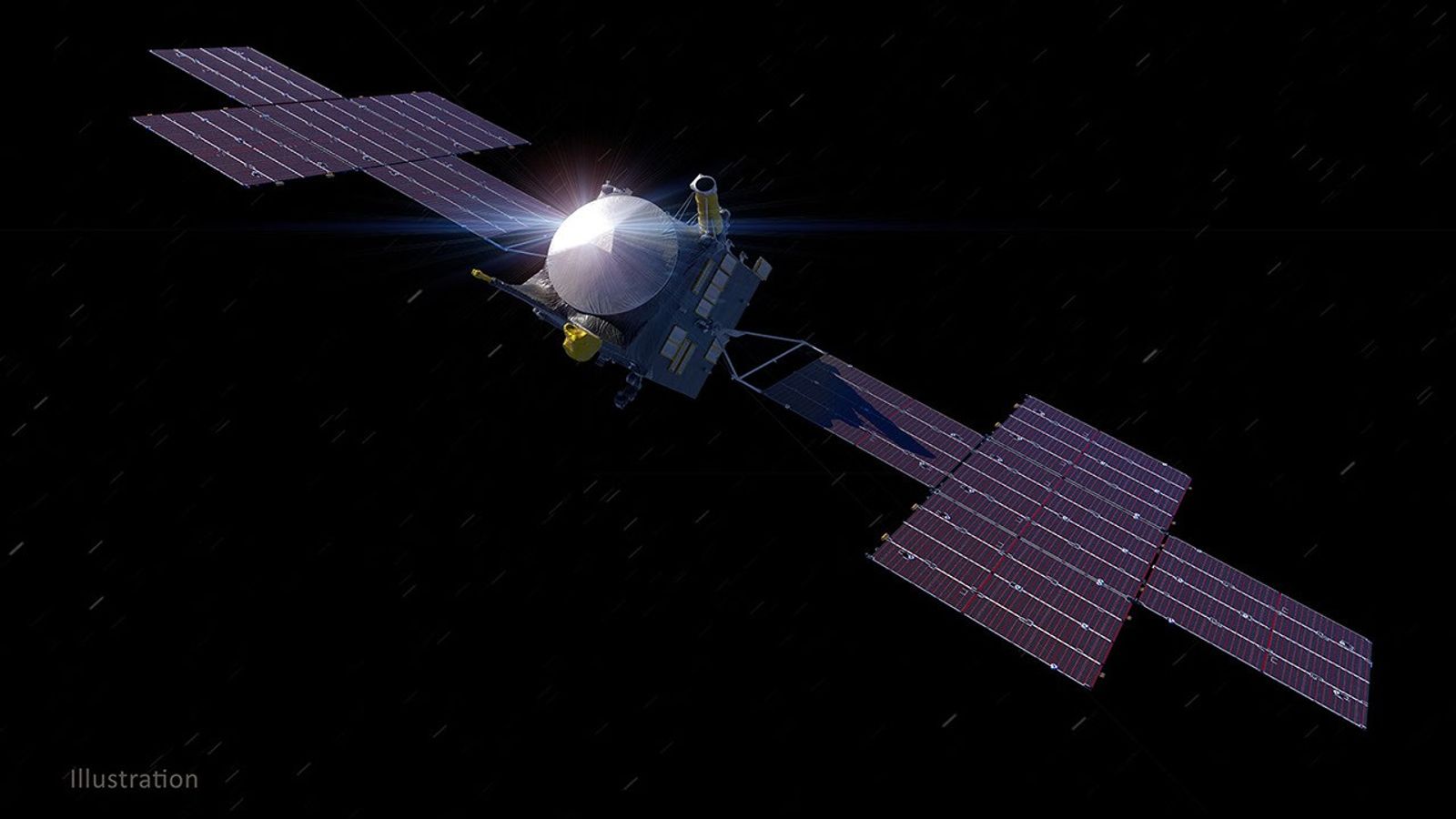Psyche
The Psyche spacecraft launched Oct. 13, 2023, on a mission to a unique metal-rich asteroid with the same name.
Psyche mission blog
how do we get there?
get involved

What Will Psyche Do?
Psyche is a NASA mission to study a metal-rich asteroid with the same name, located in the main asteroid belt between Mars and Jupiter.
Asteroid Psyche’s gravity will capture the spacecraft in late July 2029, and Psyche will begin its prime mission in August. It will spend about two years orbiting the asteroid to take pictures, map the surface, and collect data to determine Psyche’s composition.

Goals & Objectives
Psyche is the first mission to explore an asteroid with a surface that contains substantial amounts of metal rather than rock or ice.
The mission will improve our knowledge of iron cores, a previously unexplored building block of planet formation.

About the Psyche Spacecraft
With its solar arrays deployed, NASA's Psyche spacecraft is big enough to almost cover a tennis court.
Psyche’s main computer, flight software, fault-protection systems, and most of the telecommunications systems come from NASA’s Jet Propulsion Laboratory (JPL) in Southern California. Attached to Psyche is the Deep Space Optical Communications (DSOC), a NASA experiment that will test optical, or laser, communications beyond the Moon.






























